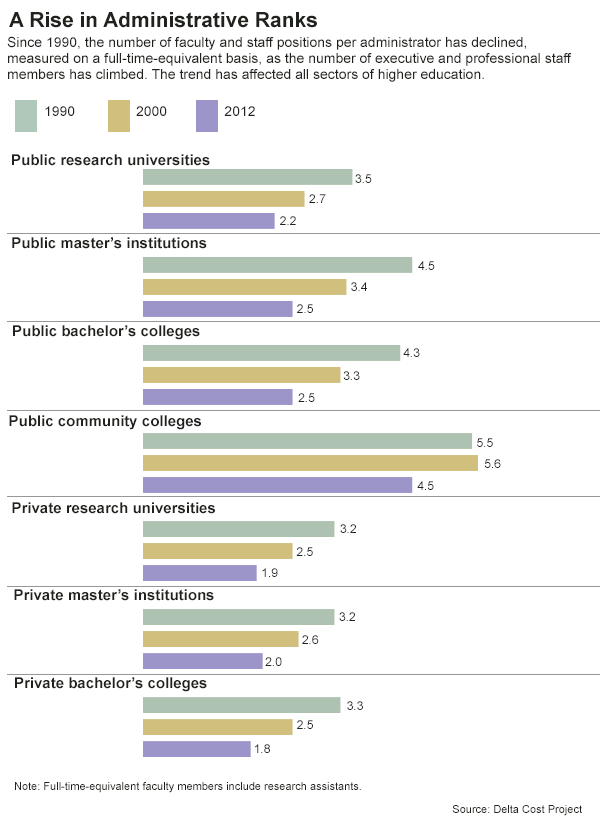
Here is some of what Timothy Taylor (from the blog the Conversable Economist) says about it:
The picture that emerges from all this is fairly clear. When it comes to employment, colleges and universities have tried to hold down faculty costs in dealing with the expanding numbers of students by the use of time-contract faculty and part-timers. The nonprofessional staff are dealing with the increased number of students by using improved information technology and other capital investments, without a need for a higher total number of staff. But the number of professional staff is rising, both in absolute terms and relative to the number of students. Desrochers and Kirshstein report these patterns in a neutral tone: "Growing numbers of administrative positions (executive and professional) and changes in faculty composition represent long-standing trends. The shifting balance among these positions has played out steadily over time in favor of administrators, and it is unclear when a tipping point may be near. Whether this administrative growth constitutes unnecessary “bloat” or is justified as part of the complexities involved in running a modern-day university remains up for debate."
I'll only add that institutions are defined by their people. As the full-time and tenured faculty become a smaller share of the employees of the institution and the professional administrators become a larger share, the nature and character of the institution inevitably changes. In this case, colleges and universities have become less about faculty, teaching, and research, and more about the provision of professional services to students and faculty. As far as I know, this shift was not planned or chosen, and the costs and benefits of such a shift were not analyzed in advance. It just happened.
His last paragraph is quite telling, since it is pretty clear to me that the "character" of many institutions has already changed. For example, the practice of management in higher education now operates as a kind of "corporation envy" and the administrators view themselves as industrial managers in a "command and control" environment, not as colleagues engaged in the practices of teaching and learning. One example of this: the idea of "shared governance" is already diminished as faculty are increasingly viewed as "contract employees" who are necessary for the delivery of service, but unnecessary for the maintenance of the culture of the institution of higher education. Whereas faculty tend to view their responsibility as educating students, administrators see their role as placating customers. Whereas faculty tend to see the development and propagation of quality as a major challenge, administrators see "brand management" via "happy customers" as the key challenge. The disparity of these two views of the role of institutions of higher education leads to predictable dysfunctions (for both faculty and administrators).
